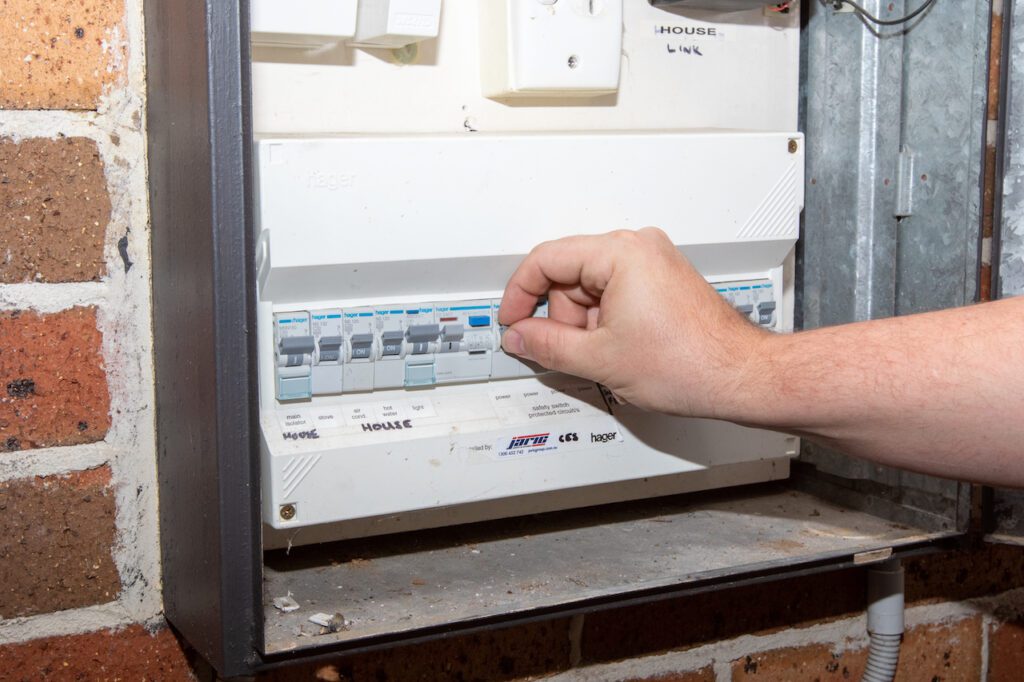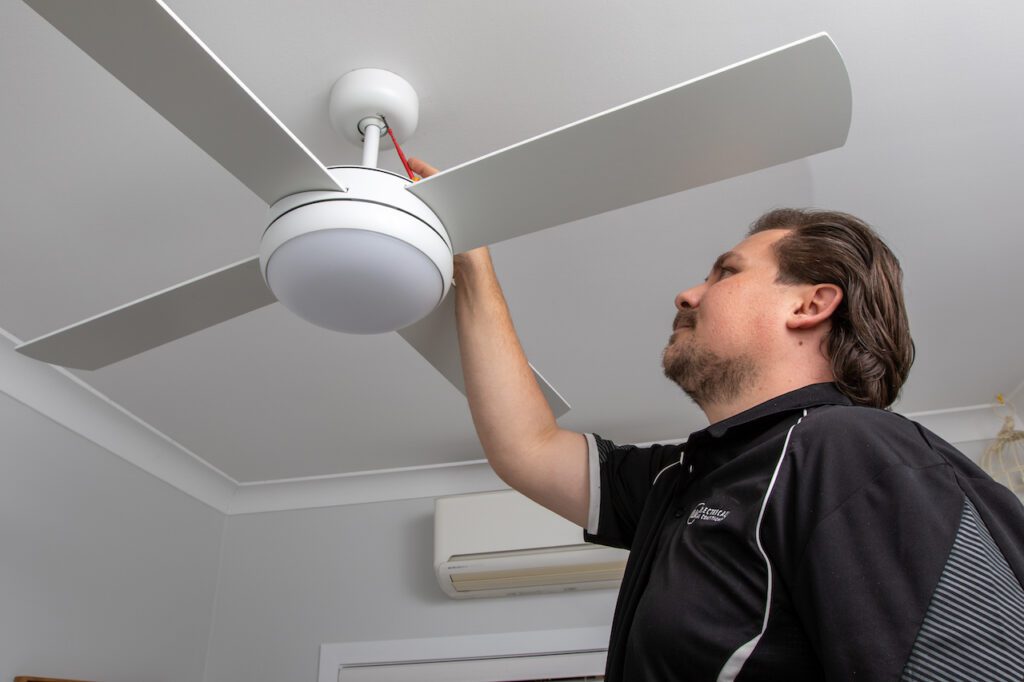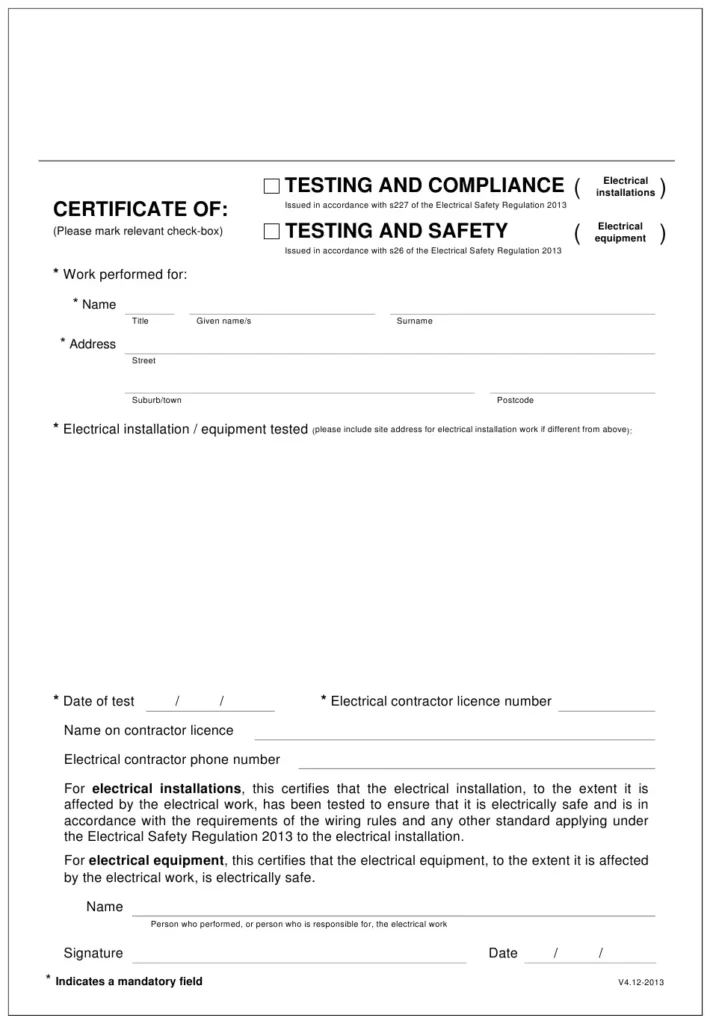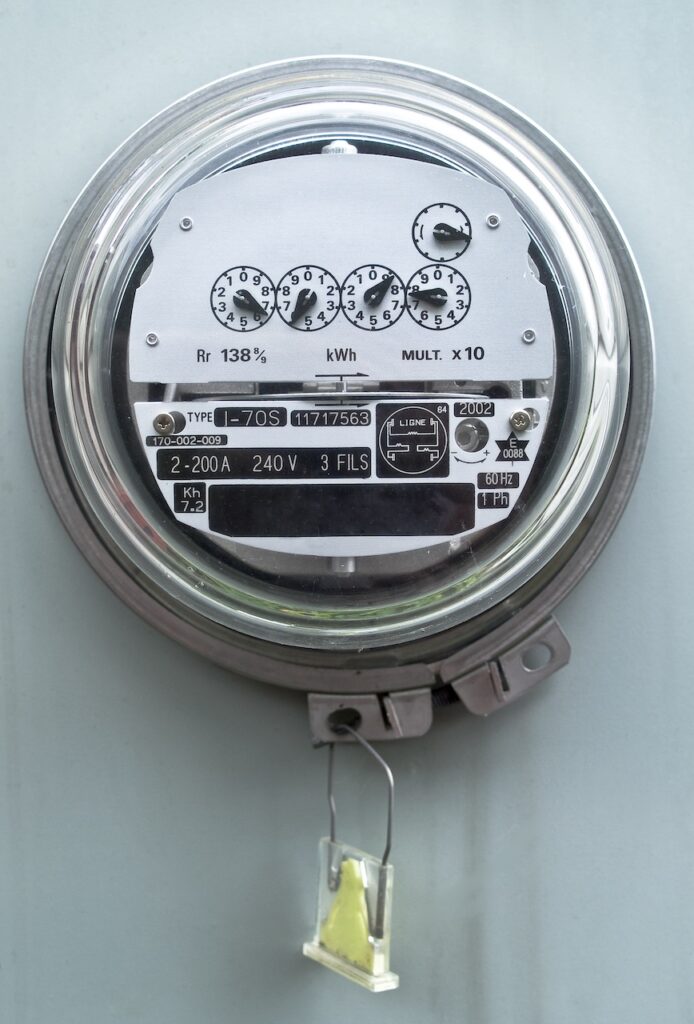Understanding the electrical wiring colours in Australia is an essential part of ensuring safe and compliant installation. Electrical cabling plays a major role in connecting households, workplaces and other public buildings to their power supply. It is important to ensure that all components are properly identified and connected according to Australian standards. This article will provide an overview of the different electrical wiring colour codes used across Australia, as well as some tips for using them safely and correctly.
Electrical wiring colours can vary from region to region, so it is important to be familiar with the specific code applicable in your area. Different countries have adopted their own unique coding system, allowing electricians and DIY enthusiasts alike to identify each type of wire quickly and easily when installing or repairing any kind of electrical equipment. In Australia, the standardised colour code for identifying wires was introduced by Cenelec (European Committee for Electrotechnical Standardization) in 1986.
Since then, this has become the national standard for both domestic and commercial applications; however there may still be variations between states due to local regulations. To help you stay up-to-date on current guidelines pertaining to electrical wiring colours in Australia, we’ve compiled a comprehensive guide covering everything you need to know about these systems.
What Are The Australian Electrical Wire Colour Codes?
In Australia, the electrical wiring colour codes have been firmly established to ensure that all citizens are kept safe from potentially dangerous electric shocks. The wire colour codes for Australian electrical wires consist of a variety of different colours such as blue neutral, green and yellow earth, black live, white neutral and brown live wires. As well as these primary colours for identification purposes, there are also specific wiring colour codes for AC – alternating current – circuits based on voltage levels. These include red-coloured high voltage cables with pink or orange insulation inside them; grey-insulated medium-voltage cables; and yellow or cream-insulated low-voltage cables.
The standardisation of the wire colour code is essential when it comes to identifying which type of wire carries what level of electricity. For example, an incorrectly wired system can result in an electric shock if one touches the wrong cable. Additionally, failure to identify the correct colours could lead to incorrect connections between power sources and appliances – leading to further safety issues. To avoid any potential hazards related to the misidentification of cables, it is important to be aware of the various electrical wire colour codes used in Australia before starting any project involving electricity systems.
Knowing the significance behind each individual colour allows us to make informed decisions regarding our own electrical work while preventing any potential harm coming our way due to ignorance or misinformation. With this knowledge, we can confidently move onto exploring what single-phase and three-phase wiring colour codes look like in order to comprehend how they differ from regular residential applications.

What Are The Single-Phase And Three-Phase Wiring colour Codes?
When it comes to electrical wiring in Australia, there are a number of colour standards that should be observed. Understanding the different colours and what they mean is important for safety as well as compliance with local regulations.
The single-phase wiring colour code:
- Blue = neutral
- Brown = live
- Green/Yellow = earth / ground
The three-phase wiring colour code:
- Double Black or Red = live
- Black or Red = live (depending on your state)
- Blue = neutral
- Green/Yellow = earth / ground
In order to ensure safety while working with electricity, it’s important to understand the correct colour codes and follow them when installing any electrical equipment. Knowing these standards can help you avoid potential hazards and prevent accidents from occurring. It’s also advisable to check out local regulations regarding wiring colour requirements before starting any installation project – understanding how each type works will make sure everything runs smoothly and safely. With this knowledge in hand, you can confidently begin work on your next DIY project without fear of making costly mistakes.
Are The Wiring Colour Codes The Same Around Australia?
Australia has a distinct electrical wiring colour code which is largely the same across all states and territories. The three phase wiring of the Australian electrical system typically uses red, black, blue or brown wires for active power lines and yellow green stripes are used to mark protective earth.
The installation of any electrical circuit requires careful attention to wire colour codes during installation in order to meet safety standards and regulations. While there are no specific uniform codes for AC current systems around Australia, electricians should adhere to the general rule that live (or active) wires should be coloured red or black while neutral wires should be blue or black. Earth (or ground) conductors must always be marked with either green/yellow striped insulation or bare copper cables.
A comprehensive understanding of the correct wiring colours in Australia allows an electrician to ensure safety when undertaking their electrical work. This knowledge helps them know how best to connect components within an electrical system so as not to experience overloads or short circuits which can cause considerable damage and even life-threatening accidents.

What Does Each Wire Colour Mean?
In Australia, the electrical wiring colour codes are standardised in accordance to Australian Standard AS/NZS 3000:2018. This sets out a range of different colours for both AC and DC power wires depending on their voltage level. The colour coding will vary between countries, but in Australia these codes have changed over time due to safety regulations.
The most common codes found today are Live (red), Neutral (black) and Earth (green). In some cases, blue is used as a neutral wire instead of black so it’s important that you remember this if you come across any old wiring or new installations with older wiring standards.
For AC power cables, brown is generally used for live wires, blue for neutral and green-yellow for earth. As previously mentioned though, there may be other variations such as yellow being used for live and white for neutral depending on how recently the installation was completed – always double check before attempting any type of work! Additionally, when working with DC systems orange is usually used as an alternative to brown for the live wire while grey can replace the blue wire as a neutral conductor.
It’s essential to understand these colour codes correctly before undertaking any kind of electrical work – failure to do so could result in serious injury or even death due to electric shock hazards. With this in mind, identifying which colour belongs to which circuit requires careful consideration and should only ever be done by someone who has been trained in electrical safety protocols.
Live Wire
In Australia, the electrical wiring system requires colour coding for safety and ease of identification. The live wire is identified by a red or brown cable, depending on the type being used. This single-phase wiring consists of three wires – neutral, live and earth wires – to provide protection against electric shock.
| Live | Neutral & Ground |
|---|---|
| Red/Brown | Blue/Black |
| 240V | 0V |
| Positive Charge | Negative Charge |
The Australian wiring colours are ingrained into all certified electricians so they can easily identify which cables require repairs while adhering to safety regulations. It is important to note that the ground (or earth) wire has no voltage but acts as an additional layer of insulation in case there is any improper contact with the live wire. Though it does not carry current like the other two wires, it creates a path away from the appliance for electricity should something go wrong. In this way, it serves to protect people from potential electric shocks.
It goes without saying that these different coloured wires must be connected correctly when performing electrical repairs or installations in order to ensure a safe environment; incorrect connections may lead to serious injury or death due to electrocution. Therefore understanding their function within an electrical circuit will help minimise risk during installation and maintenance activities involving electricity.
Ground & Blue Neutral Wires
In electrical wiring, colours are like the map of a city. They provide direction for electricians and give safety to inhabitants – in this case, appliances and humans. In Australia, there is a specific colour coding system that outlines which ones should be connected to each other or not. This includes earth and neutral wiring. The national standard abides by blue as a universal colour for neutral wire acts, while green/yellow stripes represent ground wires; however, different types of appliance wiring can also have their own unique codes.
The Canadian Electric Code (CEC) further defines these guidelines with additional colour schemes such as black being used for hot wires, white for common circuit neutrals, reds for switcher travellers and blues for lamp cords respectively. The CEC standards ensure that all cables are properly identified when it comes to electrical safety. Furthermore, they help reduce any confusion between wiring codes to prevent accidents from happening due to incorrect connections.
By understanding the importance of these colour conventions within Australian households and commercial spaces alike, we begin to appreciate its role in protecting us against potential hazards caused by improper usage of electricity – thus allowing us more freedom in our day-to-day lives without fear of injury or danger. With this knowledge at hand, we now turn our attention towards signal wires and how these relate back to electricity in general.
Signal Wire
In Australia, it is important to understand the electrical wiring colours and their associated regulations. This will help ensure that any wiring connection is handled safely and correctly. The national electrical code defines the standard colour coding for different types within a circuit. Generally speaking, live cable is brown in colour and neutral cable is blue; however this may vary depending on the type of cable and appliances used. In most cases, an earth cable makes up the third component which is usually green or yellow/green in colour.
It is paramount that these basic rules regarding coloured cables are adhered to when working with electricity as they are designed to prevent electric shock from a live electrical current. It goes without saying that if you’re ever unsure about how to handle live wires then get in touch with our professional electrical team today!
Get In Touch With Our Professional Electricians Today!
The electrical wiring colours in Australia are based on the standard for identifying conductors. The active wire is coloured brown or red and indicates positive current, while the neutral wire is coloured blue and indicates negative current. Green wires indicate an earth connection. In order to prevent electrical overloading, it is important that every electrical system has all these components correctly installed and connected.
To ensure safety when working with electricity, a guide to electrical wiring should be followed at all times by electricians working on the wire. This includes following colour-coded instructions as well as using appropriate tools and devices. Our professional team of experienced contractors can provide advice and assistance on any aspect of your home’s Electrical Service, including AC & DC installations, rewiring existing systems, repairs and maintenance services. We use only top quality materials to guarantee our customers best performance from their Electrician services.
Our team members have been extensively trained in both theory and practice so you can trust them to deliver excellent results within timeframes that suit you best. If you need help with your home’s electrical wiring requirements or require further information about our services, please do not hesitate to get in touch today!
If you’re looking for an electrical expert on the Sunshine Coast, Brisbane, Gold Coast, or beyond, your search is over. We offer same-day services with affordable prices and a 100% lifetime workmanship guarantee. Contact us today on 1800 548 332 or fill out our contact form to take advantage of our services!
Frequently Asked Questions
Is It Safe To Attempt Electrical Work On My Own?
A complex web of wires, with hues and shades that vary from one region to the next, is integral in electrical wiring. Depending on the scope and complexity of a project, attempting such work without professional help can be deemed as a dangerous venture. This article aims to discuss whether it is safe for an individual to undertake electrical wiring on their own.
When considering if this kind of task should be done independently or not, safety must be taken into account first and foremost. The risks associated with amateur electricians are significant; potential hazards include electrical shock or fire due to incorrect installation and connection. As such, individuals seeking to wire their homes need to possess both adequate knowledge and skill levels prior to commencing any tasks involving electricity. Qualified professionals have access to tools that they use regularly which may not necessarily be available at home – having these items will further reduce the risk of accidents occurring during the process of rewiring a property.
On the other hand, there are several benefits when undertaking DIY electrical wiring projects: financial savings due to no labour costs being incurred, satisfaction gained by completing a job yourself and increased confidence in your abilities as an electrician – all of which contribute towards liberation from dependency upon external sources for assistance. That said, even those who feel confident about tackling such a task should think twice before diving straight in; taking time out beforehand to research local regulations regarding residential wiring codes would prove beneficial in ensuring compliance with current laws whilst also minimising risks posed by incorrectly wired appliances or systems within the home.
Given its inherent complexities and dangers involved however, performing electrical wiring without professional help may not always be advisable; making sure you understand how electricity works is essential before attempting anything related to power distribution or connections within domestic premises. Gaining advice from qualified personnel can provide peace-of-mind that any job carried out adheres strictly to industry standards while avoiding expensive (and potentially life threatening) mistakes along the way.
How Can I Ensure I Am Using The Correct Electrical Wiring Colour Codes For My Area?
When it comes to electrical wiring, the use of correct colour codes is essential for safety. This is because different colours are used to identify the purpose of each wire and its connection points within the system. It is therefore important to ensure that one is using the appropriate colour code for their area when attempting any type of electrical wiring project.
The first step in ensuring that one is using the correct colour codes for electrical wiring in Australia would be to obtain a copy of Australian Standard AS/NZS 3000:2007 – Electrical Installations (known as ‘the Wiring Rules’). This document contains detailed information about all aspects of safely installing various types of electrical equipment, including specific details on which colours should be used for particular purposes.
In order to apply this knowledge effectively, one must also take into account local variations or amendments that may have been made to these standards by government or industry bodies in their region. The relevant authorities can provide additional guidance on such matters if required. Furthermore, experienced professionals with expertise in safe electrical installations can offer invaluable advice and assistance when undertaking complex projects involving large-scale work.
By following these steps, individuals looking to undertake an electrical wiring project can confidently complete their task while knowing they have taken every precaution necessary to minimise risk and maximise safety outcomes.
Are There Any Other Requirements I Need To Be Aware Of When Wiring?
Although the electrical wiring colour codes are important when working on any home project, there are other aspects to consider. This article seeks to discuss what else needs to be considered when wiring an area and how those requirements may vary depending on the region.
To begin with, it is essential that one understands their local safety regulations and building code requirements before tackling a project such as this. As each region has its own laws governing this kind of work, it is pertinent that research is done beforehand to ensure no mistakes or dangerous practices take place. Additionally, the tools and materials needed will also depend on where you live; for example in Australia, different types of insulation might need to be used due to environmental conditions like humidity levels. Furthermore, certain lengths and gauges of wire should be employed according to specific rules – these can all be found in your local guidelines.
It is critical that anyone undertaking work with electricity takes appropriate measures for their own safety. Protective clothing must always be worn and proper precautions taken against potential hazards. Also important is being aware of who can legally carry out such projects: often licensed professionals are required by law in many countries around the world, including Australia. Employing someone who is not adequately qualified could result in serious injury or even death if something were to go wrong during installation or maintenance. Knowing who you’re dealing with ahead of time can help make sure that everyone involved is safe throughout the process.
Being responsible while carrying out work involving electricity requires knowledge beyond just knowing which colours correspond with particular wires; understanding regional laws and protocols relating to electricians, using suitable materials and taking necessary safety precautions are all key elements that cannot afford to be overlooked. In order for any job related to electricity to succeed without issue, these steps must all come together seamlessly – only then can peace of mind prevail!
What Is The Difference Between Single-Phase And Three-Phase Wiring?
Electrical wiring requirements vary depending on the type of installation in question. Single-phase and three-phase wiring are two distinct types of installations that require different considerations when being installed. In this article, we will explore the differences between single-phase and three-phase wiring as they relate to electrical systems:
- Three-phase wiring is often used for industrial applications due to its higher power capacity compared to single-phase wiring. It requires more conductors than single-phase wiring and has a larger voltage drop over longer distances which can affect safety and performance.
- Single-phase wiring is typically found in residential settings where it provides adequate power for lighting, air conditioning, and other appliances without having an excessive load on the circuit breakers or fuses. It also tends to be less expensive than three phase because there are fewer components required.
- Both single-phase wiring and three-phase have their advantages and disadvantages; however, both must be properly wired according to local building codes in order to ensure the safe operation of the system. Electrical contractors should be consulted if any doubts exist about proper installation techniques or code compliance issues related to either type of wiring system.
When deciding whether to use one phase or three phase for an electrical installation project, factors such as cost, available space for cabling, current draw from connected devices, safety features needed, and expected life span of the equipment need to be taken into account before making a decision. Additionally, since each situation may present unique challenges or obstacles during installation time frames should also be considered carefully when choosing the appropriate option for your application needs.






